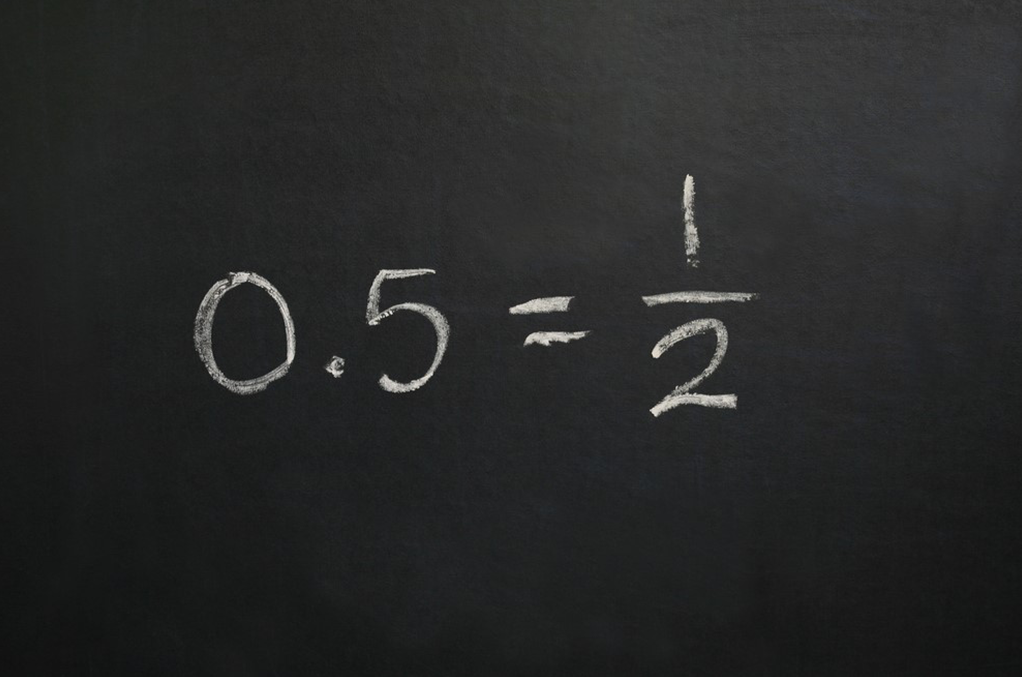It’s natural: Fractions are for counting, and decimals are for measuring
Mental representations of numbers have roots that go beyond language and culture.
Fractions and decimals are often thought of simply as alternative ways to represent the same quantity, and this is how they are typically introduced when taught to children. However, studies have shown that people conceive of an amount differently according to whether it is notated as a fraction or as a decimal and that they process the two notations differently. For example, when comparing two quantities to determine which one is larger, people are able to judge more quickly and accurately with decimals than with fractions, while fractions are more useful for representing countable items and proportionality relationships.
Several studies have demonstrated the tendency of college-level adults to mentally associate discrete quantities with fractions and continuous quantities with decimal numbers. However, since these studies were all conducted with U.S. students, it remained an open question whether this difference was related to specific characteristics of U.S. language, culture, or education or reflected a deeper psychological phenomenon.
This question has now been answered, thanks to work by Prof. Hee Seung Lee of Yonsei University and three fellow researchers at the University of Washington and the University of California, Los Angeles. The team took five key experiments conducted in the U.S. in 2014 and 2015 and systematically replicated them with undergraduate students in South Korea, where the language, culture, and approach to mathematics education are quite different from those in the U.S.
“Our aim was to determine whether the differences in processing between the two types of rational numbers reflect specific characteristics of the samples used in the original studies conducted in the U.S., or reflect more fundamental representational differences between alternative formats for rational numbers,” said Prof. Lee.

When they replicated the U.S. experiments in South Korea, the patterns and effects that had been found among the U.S. students were closely mirrored in their South Korean counterparts for all five experiments. Fractions had an advantage over decimals for working with countable sets and ratios, while decimal representations were strongly tied to continuous quantities and magnitudes.
Prof. Lee said, “The studies indicate that this distinction is not simply an artifact of the American educational system or cultural context, but rather reflects important representational differences in how students store, manipulate, and think about rational numbers and the types of quantities they naturally model in the real world.”
For developing general theories of higher cognition, it is critical to be able to distinguish between observations that are specific to particular educational practices and those that represent more fundamental phenomena. The team’s findings are important because they provide evidence that the differences in the ways people use and process fractions and decimals reflect deep conceptual differences in the human mind between these representations of rational numbers.
Recommended Articles
Professor Chammah Kaunda
Professor Bennett Holman
Professor Young-Hoon Kim
Self-Control (not IQ) Explains Better Academic Performance Among “Tiger Cubs” in Taiwan